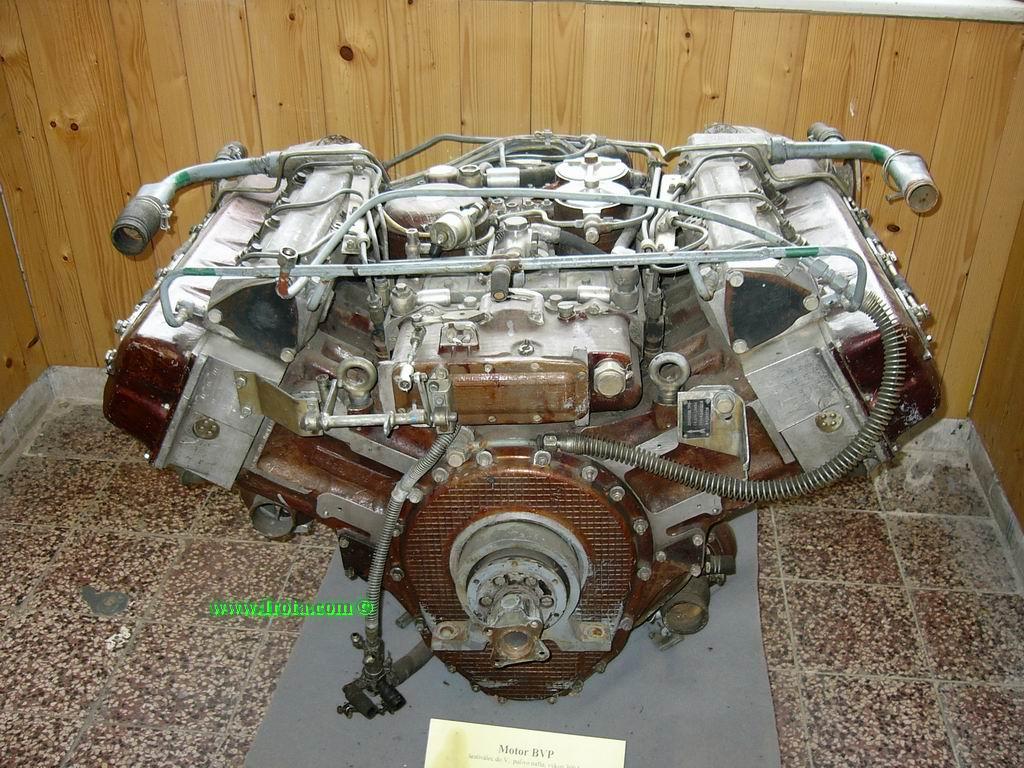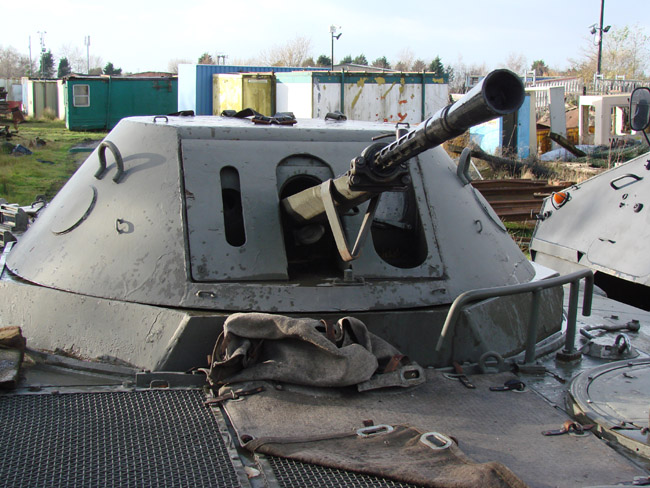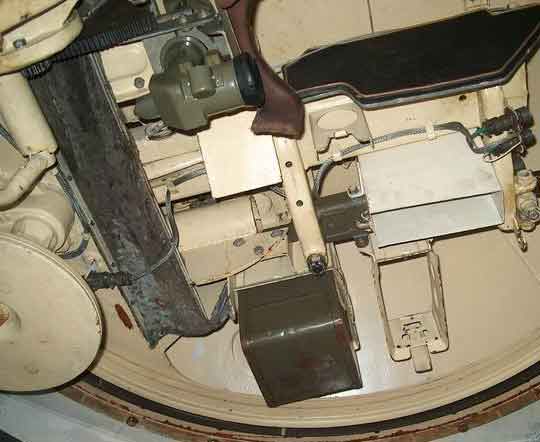


OT90
English Transaltion
Merci à AMB Brescia Pour ces photographies
.jpg) |
L’OT90 est un BMP russe, mais construit sous licence en Tchécoslovaquie de 1972 à 1988, l'usine de Dubnia a construit un total de 5.100 véhicules BMP1 donc 70% pour l'ex-URSS. (70% de la production totale en Tchécoslovaquie au cours de cette période. L'OT-90 est entré en service en 1990 (OT 90) C'est un véhicule de combat d'infanterie, dont la tourelle biplace avec canon de 73mm a été remplacée par celle du VCI l'OT-64C (8 × 8) monoplace manuelle armée d'une KPVT 14,5 mm et de 7,62 mm PKVT .
Pourquoi?
L OT 90 est né de l’application du Traite de réduction des forces conventionnelles en Europe (FCE) signé à Paris en Novembre 1990
Le traité définit la catégorie de véhicules blindés, les VCI doivent avoir un canon égal ou inférieur à de 20mm. Ainsi, le BMP 1 ou 2 avec un canon BVP-1 de 73 mm, ou un canon automatique de30 mm canons mm devront être ferraillés
D'où l'idée originale d’ adapter ce VCI aux nouvelles normes en vertu des accords
Donc, la Tchécoslovaquie décide de convertir le BMP 1 en l'OT-90
Au lieu de la configuration standard avec la tourelle biplace équipée d’un 73 mm ils mettent en place la tourelle armée d'une KPVT 14,5 mm et de 7,62 mm PKVT de l’ OT 64
L’engin est équipé d’un moteur six cylindres, diesel UTD - 20 de 15900 cm3
 |
Pour adapter la nouvelle tourelle des modifications irréversibles ont permis de boucher le puits de tourelle original avec des plaques de blindage Ceci, cependant, n’améliore pas les caractéristiques du véhicule en raison du déplacement du centre de gravité. De plus la tourelle et son équipement limite l'espace à l’intérieur du VCI. L'espace faible fait qu’il y a un petit nombre de munitions de plus des problèmes d’aération se posent sans compter que la tourelle est manuelle Donc, cette conversion n'a pas été un succès.
 |
.jpg) |
.jpg) |
 |
En raison de ces problèmes les ingénieurs proposent au milieu des années 90 une version modernisée l'AT-90 M1
Le châssis a été modifié avec l’adjonction d’une deuxième paire d’absorbeurs de choc résolvant les problèmes liés à la conduite La tourelle a reçu une mitrailleuse SGMT
un niveau système d’observation PTI 350 situé à la gauche de la vue. Une nouvelle ventilation un nouvel éclairage et un nouveau siège plus confortable sont montés
A l’extérieur un projecteur FFG 26 est installé
En 1993 / 94, une nouvelle version apparait l’ OT-90 M2 avec des kit de surblindage de la tourelle et des systèmes de visée électriques .
La 14,5 mm KPVT MG peut tirer en rafale ou au coup à coup Le siège est désormais solidaire de la tourelle lors de la rotation
Les freins ,et l’embrayage sont désamiantés.
Certains OT 90 ont été utilisés par les unités de l’ex Tchécoslovaquie opérant dans le cadre des forces des Nations Unies.
.jpg) |
OT 90
(1).jpg) |
OT90 was a Russian BMP but built under licence in Czechoslovakia From 1972 to 1988, the plant in Dubnia supplied a total of 5,100 BMP1 vehicles to the former USSR. (70 % of total production in Czechoslovakia during this period.
OT-90 was entered in service in 1990 ( OT 90 ) This infantry fighting vehicle, has the two-man turret standard with a 73 mm removed and replaced by the OT-64C (1) (8 × 8) armoured personnel carrier one-person manually operated turret armed with a 14.5 mm KPVT and a 7.62 mm PKVT machine gun.
Why ?
The basis for the creation of the OT 90 was the Treaty on Conventional Armed Forces in Europe (CFE) sign in paris in November 1990
The treaty defined category of armored personnel carriers as vehicles with weapons under 20mm. So the BMP 1 or 2 with a BVP-1 cannon 73 mm, or a quick-fire 30 mm cannon will be scrap
Therefore the original idea of conversion to rebuilding this AFV under new agreements
So Czechoslovakia army convert the BMP 1 in OT-90 configuration Instead of two-man turret standard with a 73 mm they put turret armed with a 14.5 mm KPVT and a 7.62 mm PKVT machine gun. Of the OT 64 APC The power plant was a motor six-cylinder diesel engine UTD - 20 with a capacity of 15,900 cc
.jpg) |
Arrangements had to be irreversible and has been blinded by the original globular track and it welded armor plate which was fitted to the new turret . This, however, deteriorated riding and sailing characteristics of the vehicle due to shifting center of gravity. The turret has limited space and pivot her floor shooter.
.jpg) |
.jpg) |
.jpg) |
.jpg) |
Internal intercom shooters worse by activity and not resolved drainage crop shooting, space charger was also small with a small number of ammunition and at least the turret was hardness to move which slow down the efficiency of fire. So this conversion was not a success .
Due to these problems originated in the mid 90 let modernized version of the OT-90 M1
The chassis has been added to the second pair of shock castors and thus solve the problems with driving characteristics. SGMT machine gun was replaced by type PKT 7.62 mm.
The turret was added to periscope TNP 350 located to the left of the sight.
It was also exhausting of gases introduced in the shooting and shooter had a new, more comfortable and safer seat. The turret received a new lighting and outside the tower was added headlamp FFG-126.
In 1993/ 94 a new version came.
.OT-90 M2
The most obvious adaptation to the additional armoring of the tower and the tower, including elevation and electric delivery is performed.
The KPVT 14.5 mm machine gun can fire single shots or doses. The tower is rotated with a deck seat shooter. Brake and clutch linings were of asbestos materials .
Some have been used by former Czech units operating as part of United Nations forces.